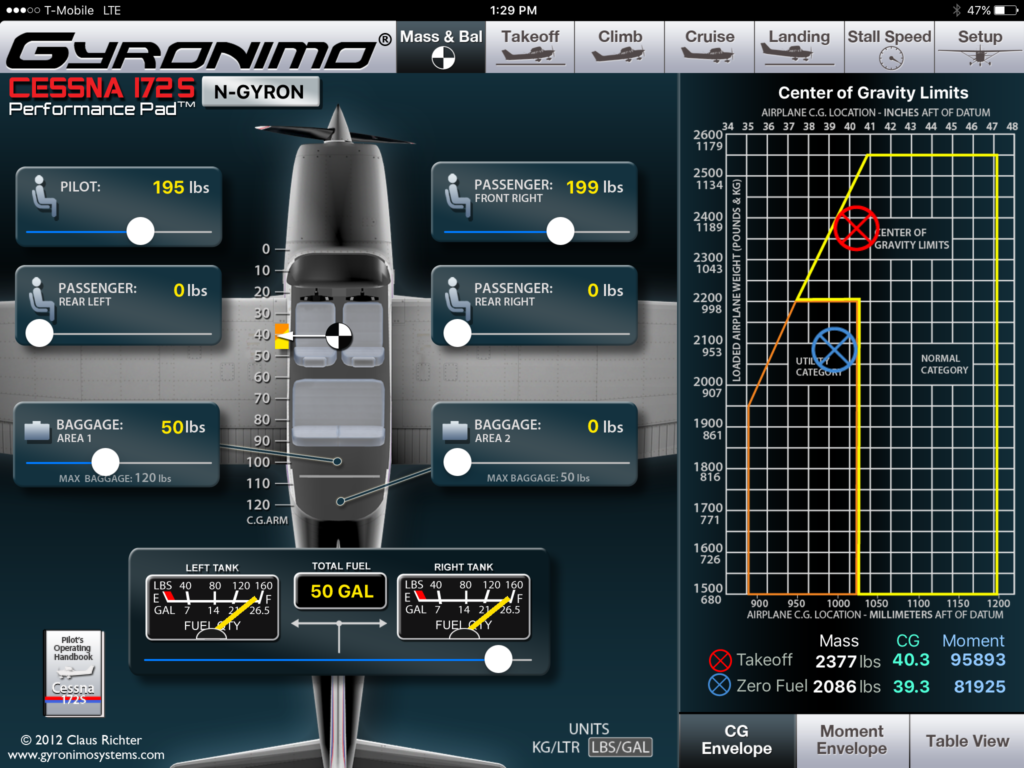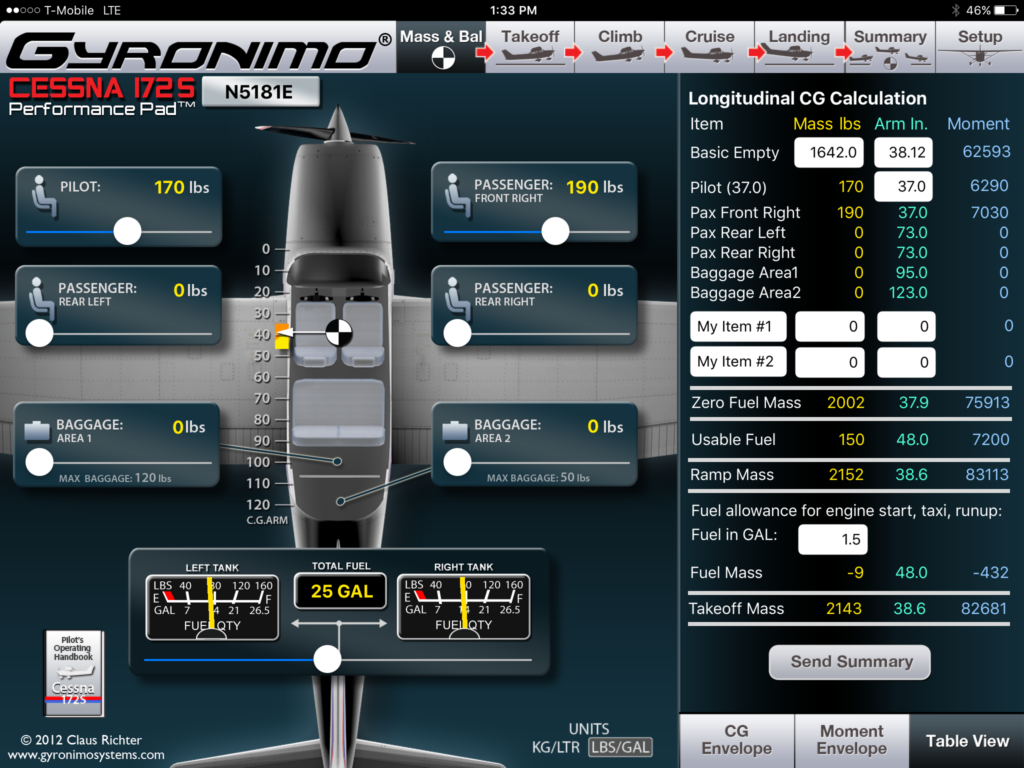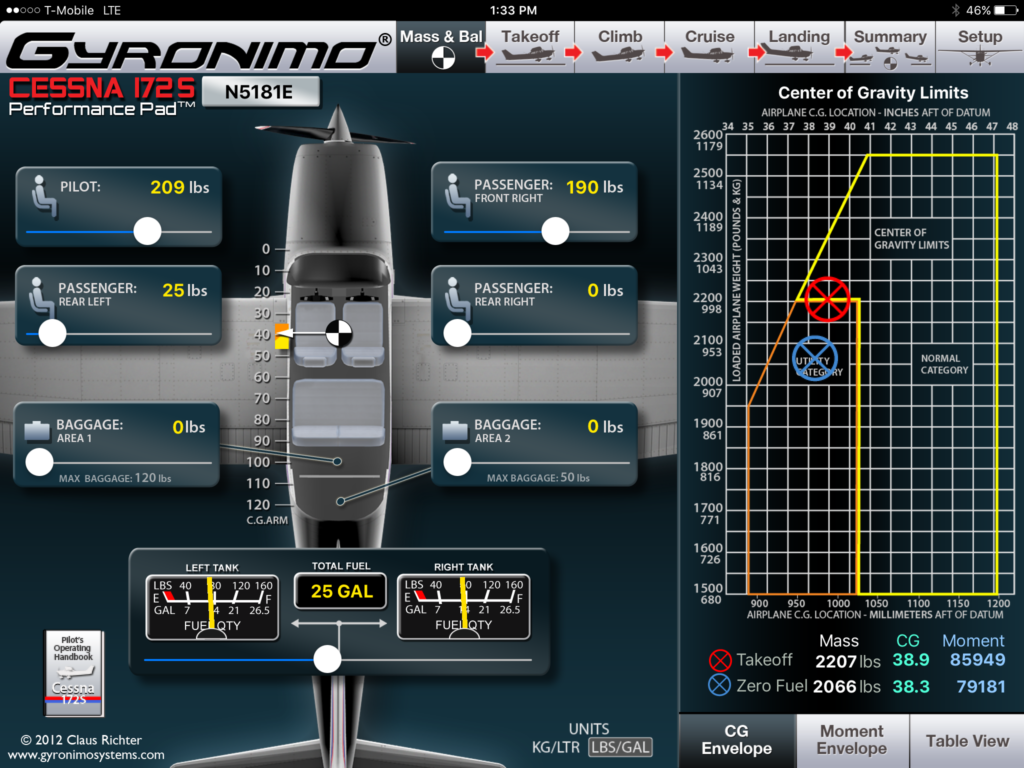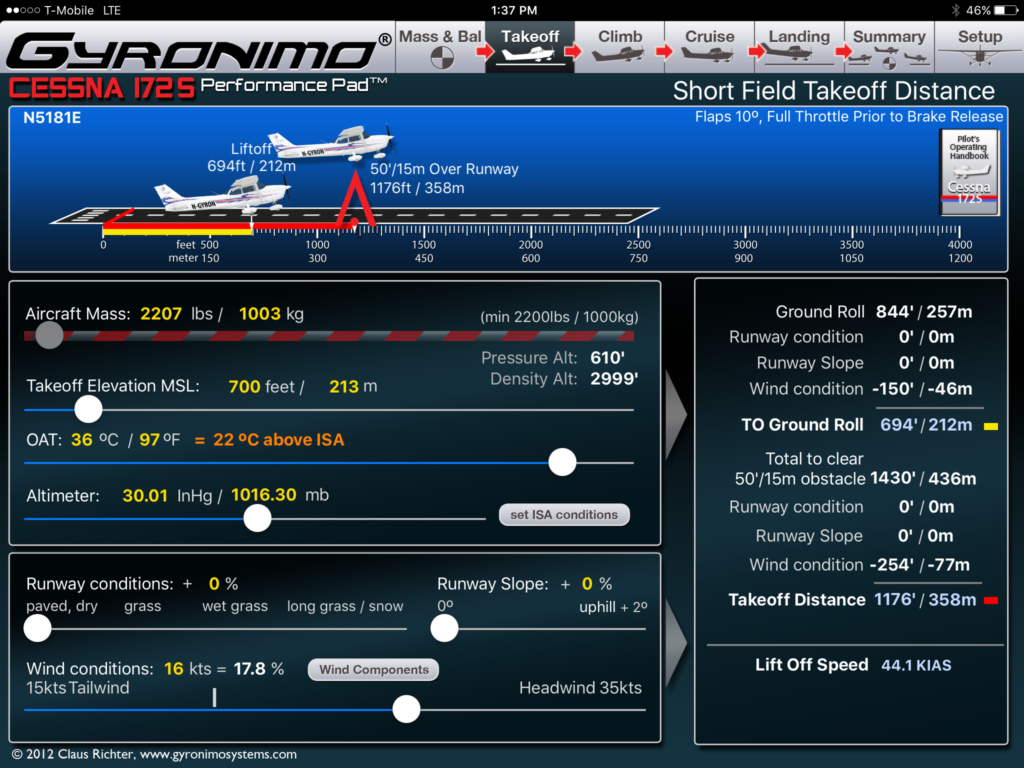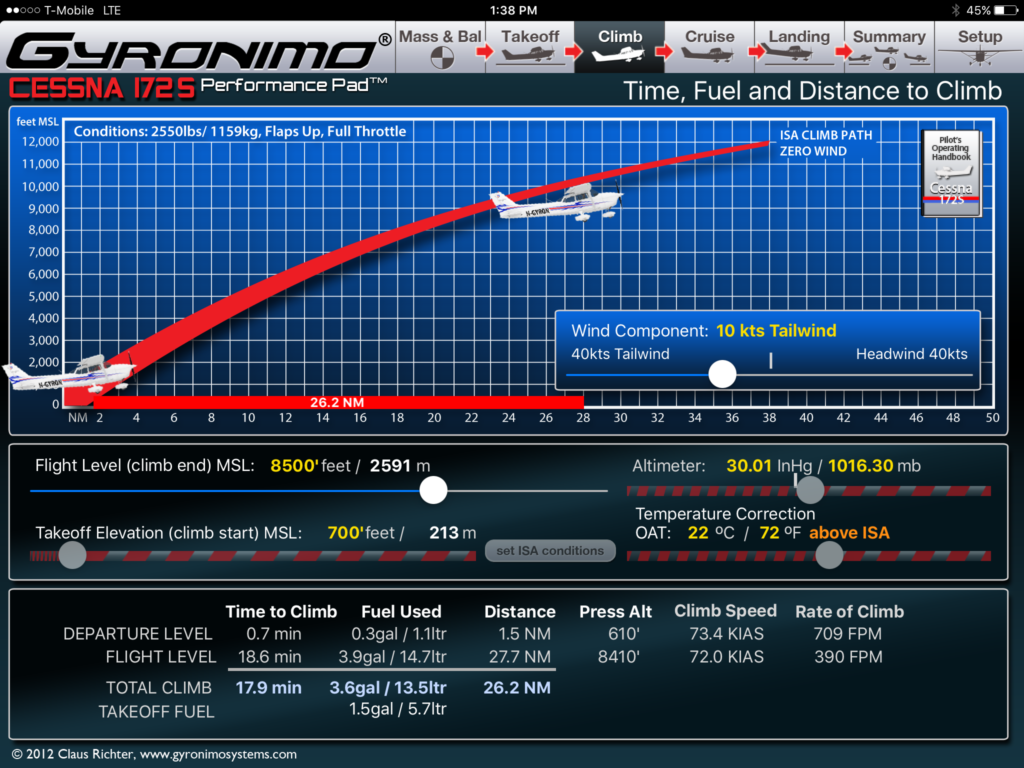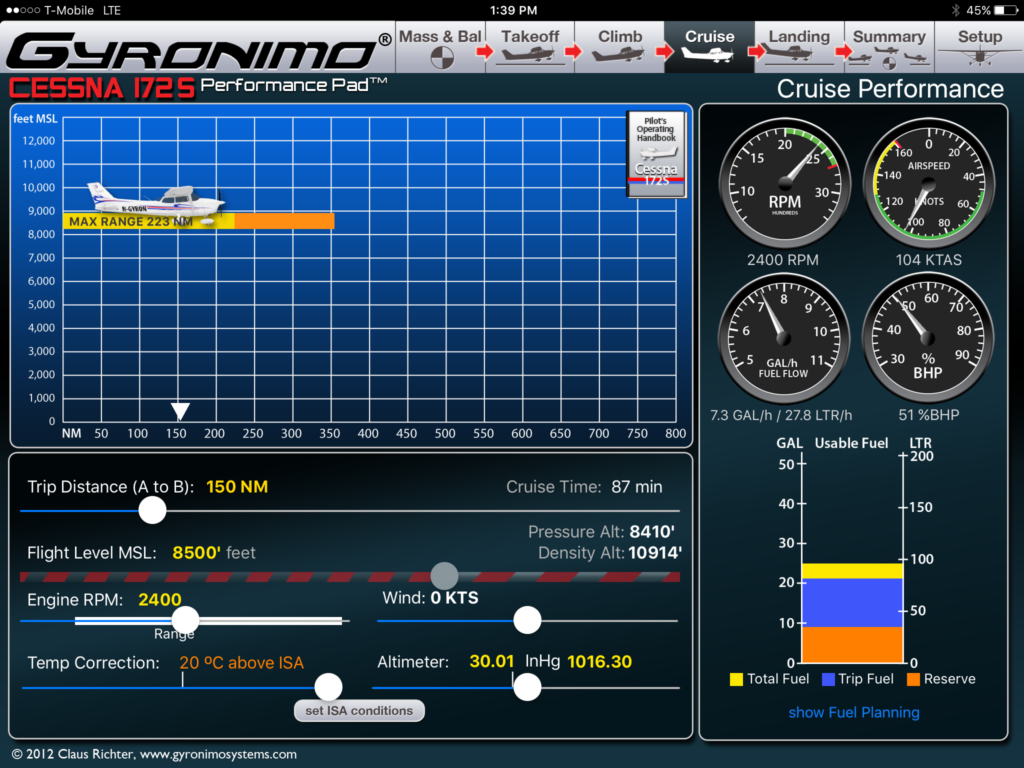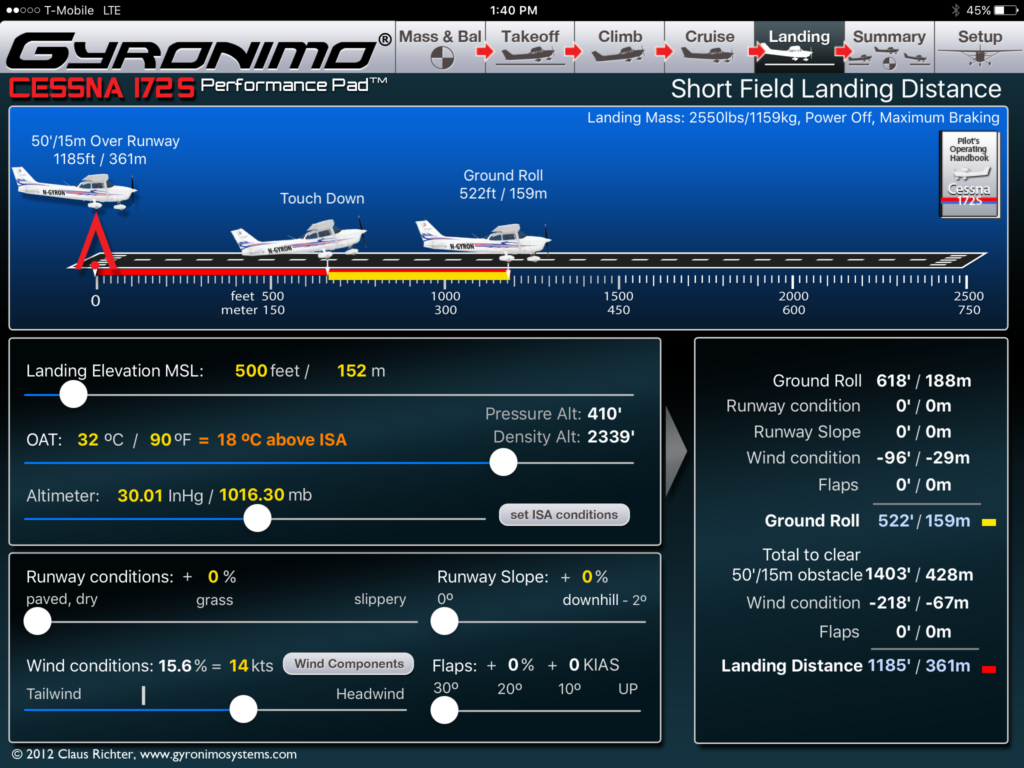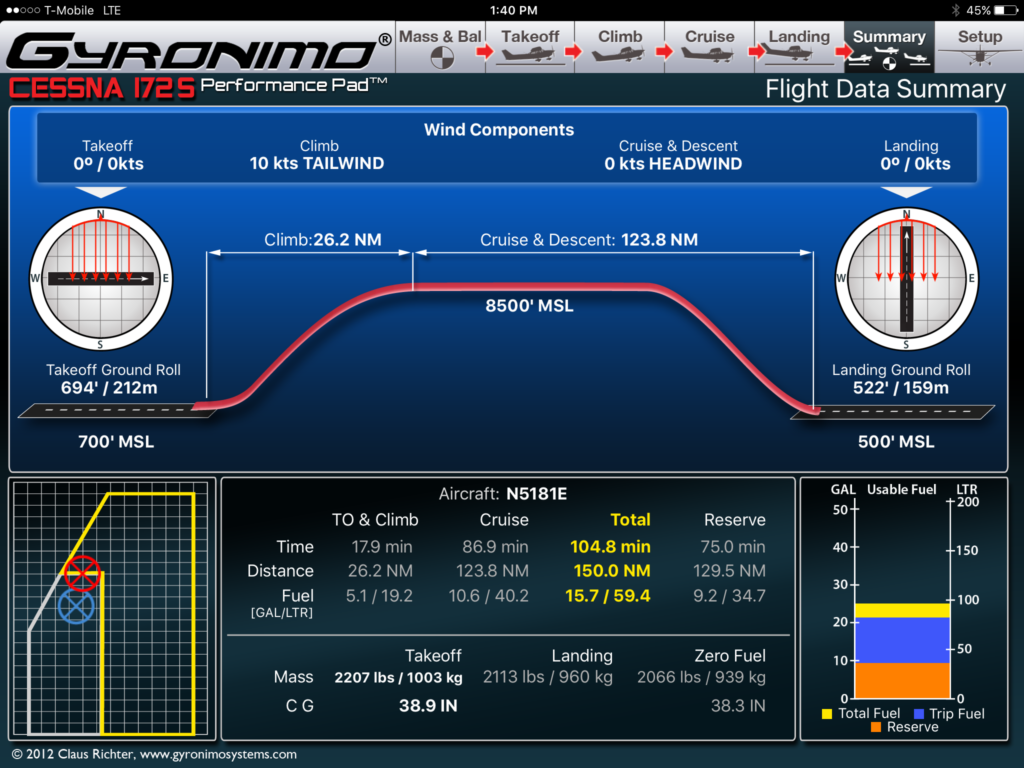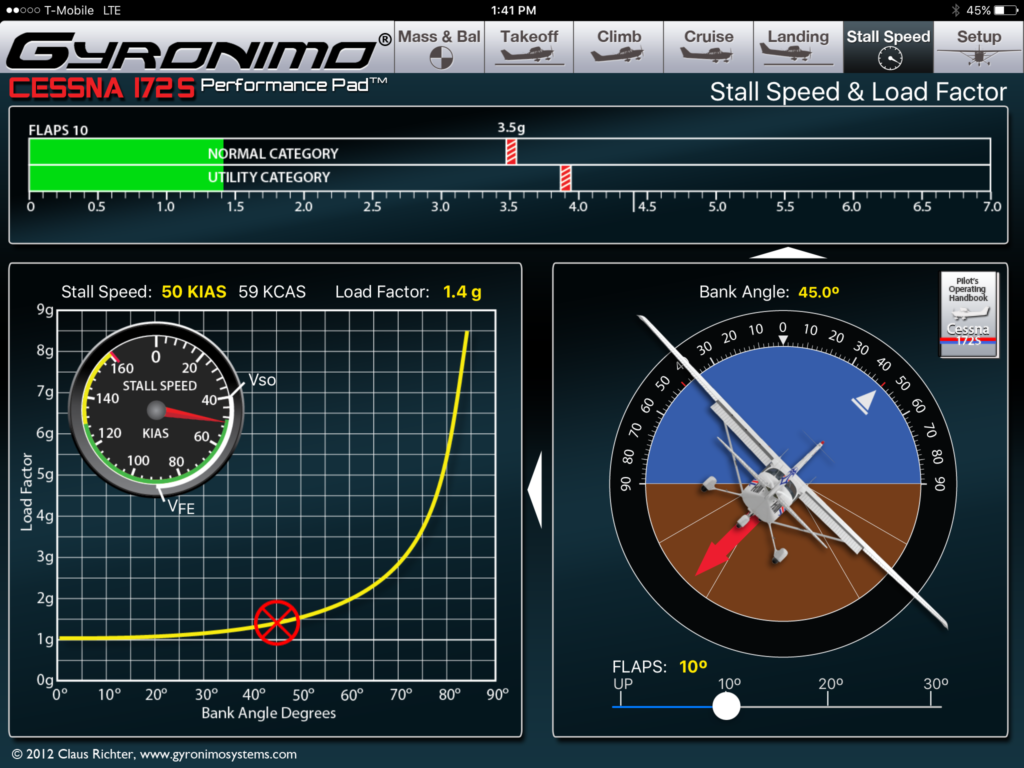Its one of the very first entries in Part 91 of the FAR, so important for every single flight that by the time my checkride came around I could recite it from memory. 91.103 requires pilots to complete the vital performance calculations for their aircraft and the specific conditions of the day to ensure that they can take off and land safely. There have been some apps to make this process easier but generally they feel clunky and complex. The folks at Gyronimo have come out with an iPad app which aims to not only make the process easier but also much more informative.
Most other apps of this nature take a “one and done” approach. You want to calculate weight and balance? That’s all you get. With Gyronimo’s implementation that’s only the beginning — each calculation feeds into the next. The weight and balance page feeds the takeoff and landing page, which feeds the cruise performance page. Its a very slick workflow that really shows how everything is connected, great especially for flight instructors using this as an instructional tool.
The very first page is the weight & balance section. Profiles can be created for up to five different aircraft to store your empty weight and arm information, or you can just enter it fresh each time. Values for the different locations can be entered either directly through keyboard input by tapping the appropriate location or using the sliders associated with that position on the diagram. Fuel is similarly added either directly or through the slider.
What I really like about this presentation is that you can alter the weights for the various positions using the slider and instantly see the results on your CG envelope diagram. In ground school getting the weight and balance questions right was one of the tougher lessons, and the reason was that I just couldn’t wrap my head around how all the different variables interacted. With Gyronimo’s app all of that becomes clear. The app might be good for the average pilot but it seems to be great for flight instructors.
Next on the flow chart is takeoff distance calculations. The app uses the input from the previous page for your aircraft mass, and the only variables you need to change here are the weather parameters for the departure airport. Not only do you get a nice text readout of the takeoff point on the runway (as well as the point at which you will clear a 50 foot obstacle) but it also assists with crosswind component calculations.
Something I’d like to see implemented here that I don’t currently is the ability to click one button and use the current weather conditions for your location. One of the nice things about running in the iPad environment is that you are typically connected to a data and location source, so using an API call to your weather data provider of choice shouldn’t be too difficult. That said the option to enter the conditions manually (if you are departing from a field a good distance away, for example) is a definite plus.
Moving on down the workflow climb performance is next. Again, the app uses the weather information along with the weight and balance information to calculate the performance you should expect — the only thing you need to enter is your final cruising altitude in MSL (and any wind components). The app then plots your time to climb at the best rate of climb and displays it visually.
One of the nice things about this display is that your performance is plotted against the “standard” performance. It gives the pilot a good understanding of how the conditions have impacted their aircraft’s performance, and might give some extra situational awareness on those hot and high altitude days that the plane isn’t going to perform as well as usual.
Predictably enough, cruise performance is next. Using the cruising altitude from the previous page and fuel load from the weight and balance calculation the app will now predict your cruise endurance at a given engine RPM setting. The app assumes that you have leaned the engine for best fuel economy, so those going a little rich of peak might see slightly different numbers.
While this is a great back-of-the-napkin approach to fuel planning and especially god visually for flight instruction it doesn’t paint the whole picture. My flight paths in IFR flying are rarely in a perfectly straight line and often the wind conditions will change wildly from one end of the flight to the other. But for basic preliminary calculations this isn’t bad at all.
Last on the list of calculation pages is the landing distance calculator. Much like the takeoff calculator the user enters the weather conditions and the app calculates landing distance over a 50 foot obstacle and landing roll. What I really like is that this app visually displays the different components of the landing calculation on a notional runway so you can see the whole approach and landing in one glance. As with the other displays you can fiddle with the sliders and watch the impact that change has on the approach or landing roll, which is great for instruction.
Finally there’s one last page which I really wish I had had back in flight school. Before releasing the aircraft the flight instructors wanted to see a complete set of performance figures for the flight, and it was a pain in the butt to enter all of that information every time. With the app all it takes is a few seconds of fiddling, and then this page is the end result which satisfies 91.103 in one simple image.
For the average aviator this would be just about all the functionality you could want, but Gyronimo adds one last page which seems geared specifically towards flight instructors.
The last page is a great visual tool for understanding the relationship between bank angle, load factor, and stall speed. You can alter the angle of the aircraft on the artificial horizon and easily see the impact of those changes on the chart to the left. Not necessarily something the average pilot will need every time they go flying, but an amazing tool that could really help a CFI drive home a lesson about steep turns.
Overall the app is very well polished and useful. The tools all flow one to the next, and at the end you have a 91.103 appropriate performance summary that is as complete as any data-holic could possibly want. There’s also a lot built in here to help CFIs do their job training the next generation of pilots with better visuals than I ever had. For $20 I can definitely see the utility for a CFI, and even the average pilot might find that the investment is well worthwhile given how easy it makes performance calculations. The only thing missing is a way to automatically gather the weather information for the current location, but even that is a minor gripe.
A great app. If only they had a version for my 1963 Piper Cherokee PA-28-180.
